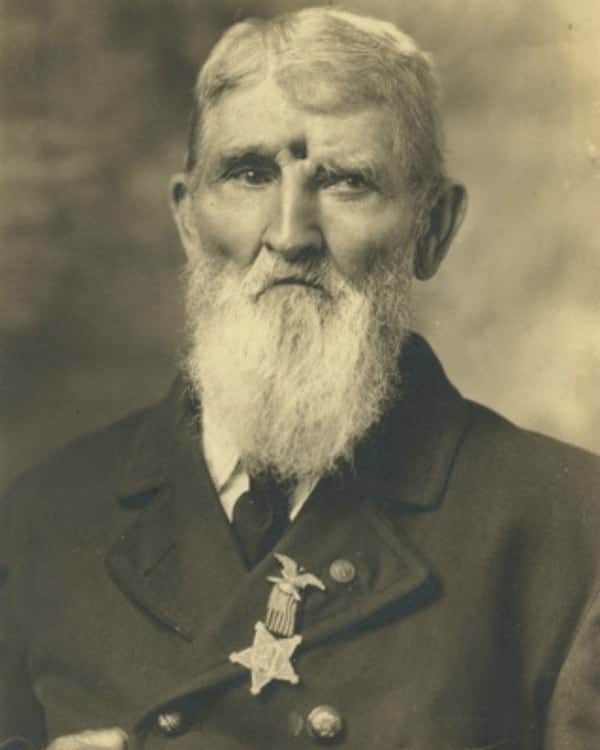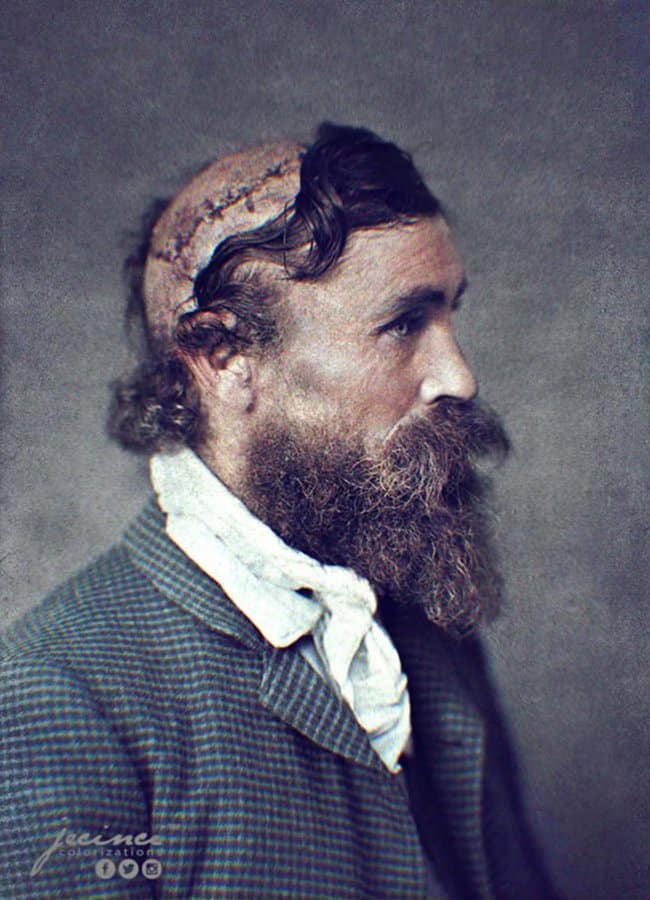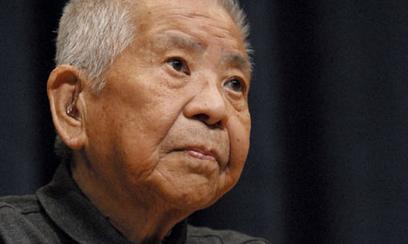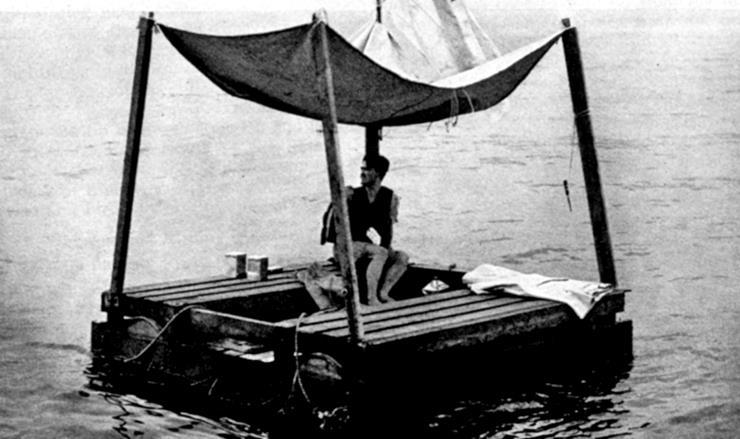In the face of extreme adversity, the human spirit has shown time and again its remarkable capacity for resilience and survival.
From individuals overcoming insurmountable odds to miraculous tales of endurance, history is replete with stories that not only astonish but also inspire. In this article, we delve into some most harrowing and extraordinary survival stories ever recorded.
1.) Joan Murray Survives a 14,500 free fall
In 1999, both of skydiver Joan Murray’s parachutes malfunctioned, leaving her to free-fall 14,500 feet above North Carolina.

Miraculously, Murray survived, thanks to the fact that she landed directly on a mound of fire ants.
Doctors believe that the intense shock of being stung over 200 times by the ants released a surge of adrenaline, which kept her heart beating.
2.) Jacob Miller was shot in the forehead
In 1863, Civil War veteran Jacob Miller was shot in the forehead at Brock Field at Chikamauga, Georgia. He had the following to say about it:

“When I came to my senses some time after I found I was in the rear of the confederate line. So not to become a prisoner I made up my mind to make an effort to get around their line and back on my own side.
I got up with the help of my gun as a staff, then went back some distance, then started parallel with the line of battle. I suppose I was so covered with blood that those that I met, did not notice that I was a Yank, (at least our Major, my former captain did not recognize me when I met him after passing to our own side).
I suffered for nine months then I got a furlough home to Logansport and got Drs. Fitch and Colman to operate on my wound. They took out the musket ball. After the operation a few days, I returned to the hospital at Madison and stayed there till the expiration of my enlistment, Sept. 17, 1864.
Seventeen years after I was wounded a buck shot dropped out of my wound and thirty one years after two pieces of lead came out. Some ask how it is I can describe so minutely my getting wounded and getting off the battle field after so many years.
My answer is I have an everyday reminder of it in my wound and constant pain in the head, never free of it while not asleep.
The whole scene is imprinted on my brain as with a steel engraving. I haven’t written this to complain of any one being in fault for my misfortune and suffering all these years, the government is good to me and gives me $40.00 per month pension.”
3.) Robert McGee survives a scalping
Robert McGee stands out in the annals of American frontier history as one of the few individuals to survive a brutal scalping. In 1890, photographer E.E. Henry captured a unique photograph of McGee, showing the extensive scars from his scalping.
In 1864, at the age of 14, Robert McGee and his family decided to move westward, like many other emigrants at that time, in search of a better life on the American Frontier.
They joined a wagon train bound for Leavenworth, Kansas. Tragically, Robert lost his parents along the journey, leaving him an orphan.
Upon reaching Fort Leavenworth in Kansas, Robert sought to enlist in the army but was rejected due to his young age. Needing employment, he took a job with a freight company tasked with delivering supplies to Fort Union in New Mexico.
That summer, as part of a wagon train from Fort Leavenworth to Fort Union, Robert worked as a teamster. The wagon train, aware of the trail’s dangers, was escorted by the US army.
Despite encounters with Indians, the caravan made steady progress, averaging about 16 miles per day. On July 18, wearied by the heat, they camped near Walnut Creek, close to Fort Zarah near what is now Great Bend, Kansas, somewhat relaxed in their vigilance due to the nearby fort.

This complacency proved costly when, around 5 pm, approximately 150 Sioux warriors, reportedly led by Chief Little Turtle, ambushed the camp. The attack was swift and brutal, and the teamsters were slaughtered within minutes.
The soldiers meant to guard the wagon train were delayed, leaving the teamsters utterly unprepared for the assault. The attack resulted in the brutal execution of between eight and 14 team members.
McGee’s account of the events is more legendary than historical. He claimed he was personally scalped by Little Turtle. Lying face down, he endured multiple arrow wounds, a gunshot to the back, and a tomahawk injury.
McGee remembered being conscious while a large portion of his scalp and hair was removed by the war leader, a practice said to be more extensive among the Sioux than other tribes.
When the soldiers arrived, they discovered a horrific scene with all members scalped. Surprisingly, McGee and another boy were found alive amidst the massacre.
Robert’s survival was astonishing. He was taken to Fort Larned for treatment and incredibly recovered, living without a scalp. His survival and adaptation to life after such a trauma are evident in the photograph taken 25 years later, in 1890.
The scalping knife, typically used by Sioux warriors in the early 19th century, as seen in the Brooklyn Museum, represents the type of weapon likely used in McGee’s scalping.
4.) Juliane Koepcke survives a plane crash
17-year-old Juliane Koepcke was sucked out of an aeroplane after it was struck by a bolt of lightning. She fell 2 miles to the ground, strapped to her seat and survived after she endured 10 days in the Amazon Jungle, 1971 Koepke and her mother were on LANSA Flight 508 when the plane was struck by lightning mid-flight and disintegrated. Koepke was strapped to her seat when she fell 3KM from the sky.
It is speculated that winds during the thunderstorm and the foliage in the jungle helped lessen the impact and the seat she was strapped into.

Koepke had broken her collarbone and had a wound on her right arm. She survived for 10 days in the jungle and had to endure maggots infesting her arm and severe bug bites. She followed a river and found a boat hut where she found other people.
She ate candy found in the wreck for food. Sadly, her mother did not survive. 14 others initially survived the crash but did not survive while waiting for emergency services. Koepke was rescued from the jungle and went on to study mammology. She is still alive today at the age of 69. Photo is from a recreation.
5.) Tsutomu Yamaguchi survived both Atomic bombs
While it’s known that at least 70 individuals experienced both bombings, Yamaguchi is the sole individual formally acknowledged by the Japanese government as a survivor of both catastrophic events.
Yamaguchi, who lived in Nagasaki, was on a business trip in Hiroshima for Mitsubishi Heavy Industries when the first atomic bomb was dropped at 8:15 AM on August 6, 1945.

He managed to return to Nagasaki the next day, and despite his injuries, he reported back to work on August 9, the very day of the second atomic bombing. Remarkably, as he was explaining to his supervisor how a single bomb had decimated Hiroshima, the bomb in Nagasaki exploded.
Initially recognized in 1957 as a hibakusha (a survivor of the bombings) of the Nagasaki bombing, it wasn’t until March 24, 2009, that the Japanese government officially acknowledged that he had also been in Hiroshima during the first bombing.
6.) Ryker Webb survives two days int he wilderness
On June 3, 2022, three-year-old Ryker Webb was playing with his dog when he decided to take a walk on his own and wandered off. After two hours of his disappearance, the family reported him missing.
A massive search for Ryker was launched, and for two days the search team made no progress. On June 5th, 2022, a family that was visiting their remote cabin in the middle of the wilderness heard the sound of a little boy crying out from behind a shed.

When they went behind the shed, they found Ryker Webb. Ryker was found tucked into a lawnmower bag. He was dressed in a light blue onesie that had been covered in dirt.
They quickly called the police and were shocked when they learned that a massive search for Ryker had been going on. He survived two days in Montana wilderness in near-freezing temperatures in an area that according to locals is heavily populated with bears and mountain lions.
7.) Poon Lim survives 133 days adrift at sea
Poon Lim, a tenacious Chinese sailor, showcased exceptional survival skills during his dramatic ordeal at sea. He managed to survive a remarkable 133 days alone on a life raft, using a variety of ingenious methods to sustain himself.
His resourcefulness was crucial in his fight for survival, as he depended on catching fish, collecting rainwater, and once even repelling a shark with a water jug.
This extraordinary display of endurance and adaptability earned Poon Lim the Guinness World Record for the longest time spent adrift at sea solo.
At 25 years old, in 1942, Poon Lim embarked on a journey aboard a British merchant ship from China’s southern coast. However, soon after departing from Cape Town, the ship fell victim to a German U-boat’s torpedo.

Amidst the chaos, Poon Lim managed to find a raft equipped with vital supplies including water, biscuits, a flashlight, and flares. He initially thought these supplies would last a month, but the reality of his prolonged ordeal soon became clear.
In his first month adrift, Poon Lim spotted several ships—a freighter, a U.S. Navy Patrol, and another German U-boat. Despite his frantic efforts to signal for help, each ship ignored him. T
hese encounters tested his mental strength, challenging him to overcome immense obstacles. Determined not to give in to despair, Poon Lim decided to rely on himself for survival.
He established a strict routine to maintain his physical and mental well-being. Despite the risk of sharks, he swam twice daily to keep fit.
While he lost weight, he managed to retain much of his muscle mass. When his water supply ran out, Poon Lim ingeniously used his life jacket’s canvas to collect rainwater, securing an essential hydration source.
To find food, he fashioned a fishing hook from the flashlight’s wires and used biscuit remnants as bait, saving each fish’s remains for future bait.
8.) Michael Hingson’s seeing eye dog saves him
For a dog who was afraid of thunder, Roselle the guide dog did her job calmly through the ear-splitting noise and crashing debris that engulfed the 78th floor of the North Tower on 9/11.
Her owner, Michael Hingson, blind since birth, smelled jet fuel. Yet he trusted that his dog would not lead him into danger. Unsure if Roselle could hear him or see hand signals through the smoke, Hingson gave the command “Forward.”

Stopping only for dog kisses to calm a panicked woman, the canine-human team led a group of people down more than 1,463 steps to safety.
9.) Stanley Praimnath survives 9/11
On the morning of September 11, 2001, Stanley Praimnath was at work on the 81st floor of the World Trade Center’s South Tower when he witnessed an American Airlines jet heading directly towards his building. In a split-second decision, he prayed and took cover under his desk just as the plane struck the tower above his office level.
The collision tore a hole in the wall behind him and sucked out almost everything in his office, leaving only his desk, which providentially protected him from the ensuing fire and debris. Trapped amidst the wreckage, Stanley’s pleas for help were heard by Brian Clark, another survivor, who bravely came to his aid.

Together, they navigated the stairs and managed to flee the building mere minutes before it collapsed. Stanley attributes his miraculous survival to divine intervention and sees Brian as a lifelong friend.
Following this life-changing experience, Stanley turned to pastoral work and motivational speaking, maintaining a deep friendship with Brian.
10.) Harrison Okene survives underwater for 62 hours
On May 28, 2013, during a salvage operation of the capsized Jacson-4 vessel, situated 100 feet beneath the ocean’s surface off the coast of Nigeria, divers were conducting an assessment. Unexpectedly, they stumbled upon a living survivor amid the ruins.
Harrison Okene, the ship’s cook, was in the bathroom at about 4 am when the boat overturned. He attempted to escape through an emergency hatch but was unsuccessful.

As the vessel filled with water, Okene found himself trapped in complete darkness, deep underwater, clad only in his boxers. He eventually located a small, four-square-foot pocket of air and a bottle of Coca-Cola. Faced with depleting oxygen, Okene secured himself in a corner of the ship, using mattresses to stem the influx of water and preserve his air pocket.
After three harrowing days in darkness, hope seemed lost. He could hear the sounds of sharks and barracudas preying on his deceased crewmates.
Then, a sound of knocking echoed through the ship – it was the divers working on the hull. To the astonishment of the rescue team, Okene had survived for 62 hours in conditions that claimed the lives of everyone else on board.
He was quickly equipped with diving gear and taken to a decompression chamber, where he spent two days recovering. Okene had endured depths that would typically be fatal, emerging as the sole survivor of a tragic ordeal.

